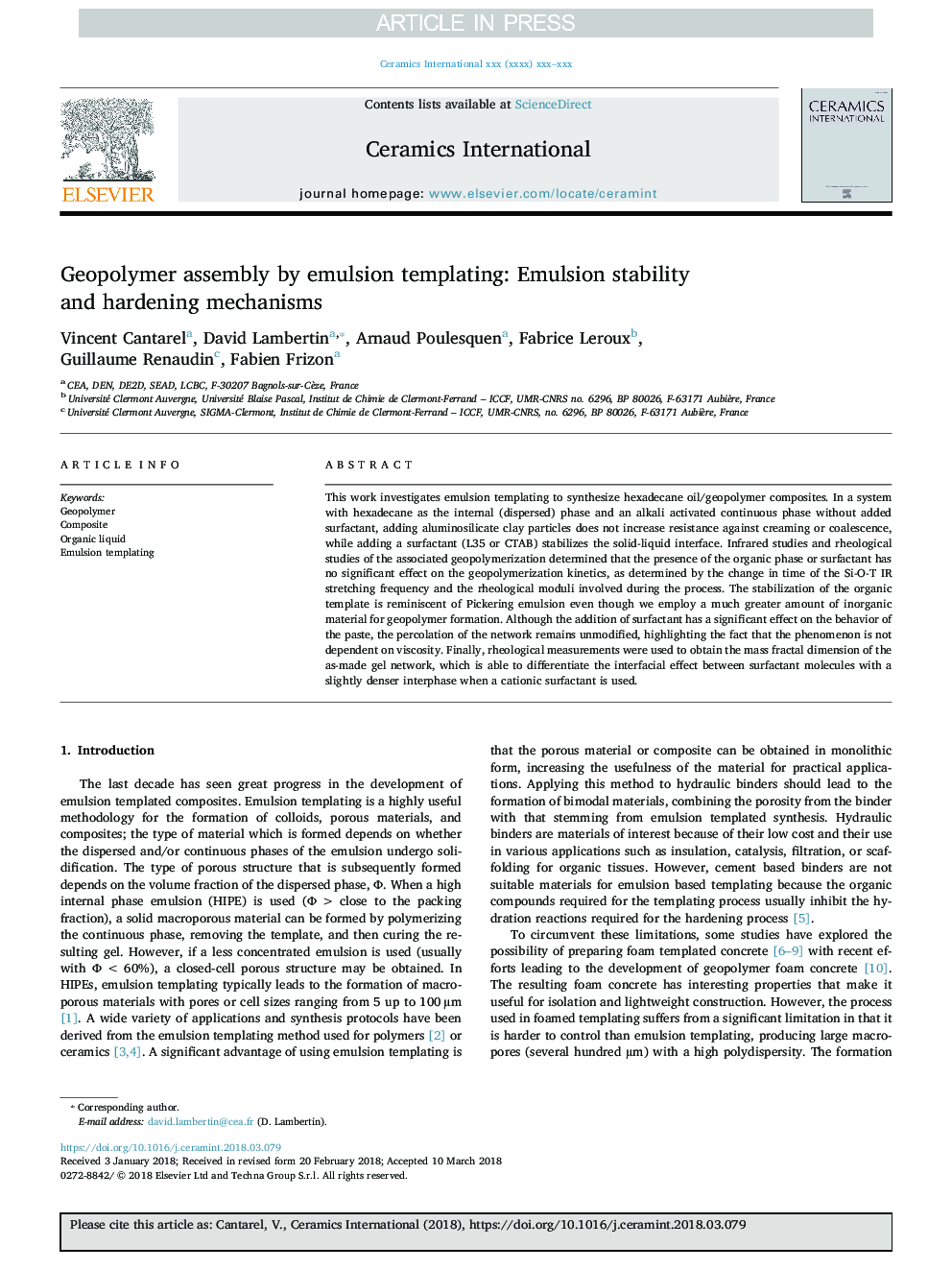| Article ID | Journal | Published Year | Pages | File Type |
|---|---|---|---|---|
| 7887237 | Ceramics International | 2018 | 11 Pages |
Abstract
This work investigates emulsion templating to synthesize hexadecane oil/geopolymer composites. In a system with hexadecane as the internal (dispersed) phase and an alkali activated continuous phase without added surfactant, adding aluminosilicate clay particles does not increase resistance against creaming or coalescence, while adding a surfactant (L35 or CTAB) stabilizes the solid-liquid interface. Infrared studies and rheological studies of the associated geopolymerization determined that the presence of the organic phase or surfactant has no significant effect on the geopolymerization kinetics, as determined by the change in time of the Si-O-T IR stretching frequency and the rheological moduli involved during the process. The stabilization of the organic template is reminiscent of Pickering emulsion even though we employ a much greater amount of inorganic material for geopolymer formation. Although the addition of surfactant has a significant effect on the behavior of the paste, the percolation of the network remains unmodified, highlighting the fact that the phenomenon is not dependent on viscosity. Finally, rheological measurements were used to obtain the mass fractal dimension of the as-made gel network, which is able to differentiate the interfacial effect between surfactant molecules with a slightly denser interphase when a cationic surfactant is used.
Related Topics
Physical Sciences and Engineering
Materials Science
Ceramics and Composites
Authors
Vincent Cantarel, David Lambertin, Arnaud Poulesquen, Fabrice Leroux, Guillaume Renaudin, Fabien Frizon,
